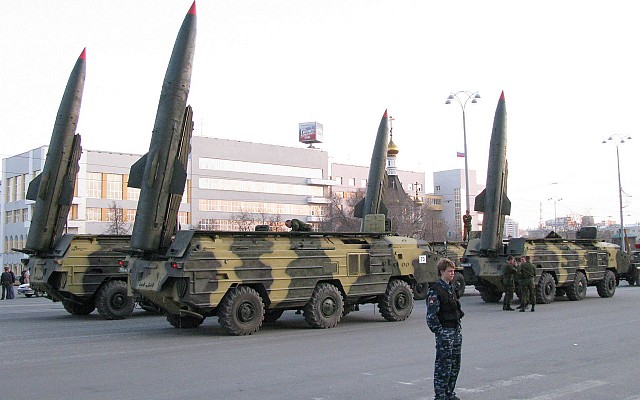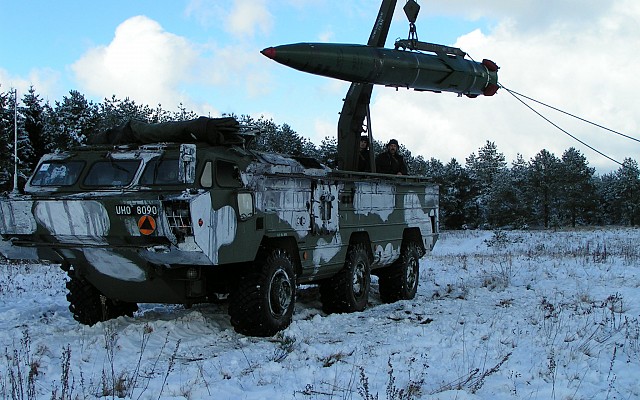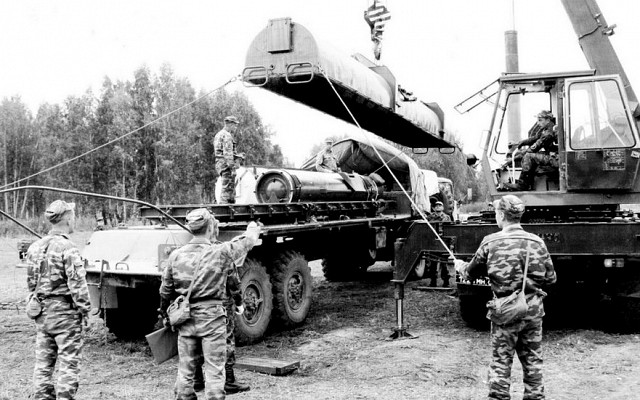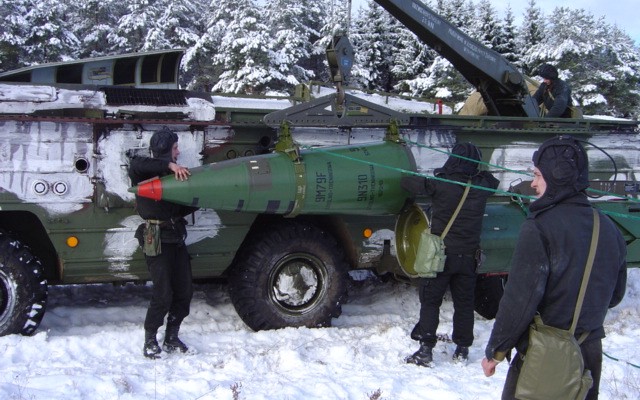9K79 Tochka
NATO: SS-21 Scarab | INF: OTR-21
Overview
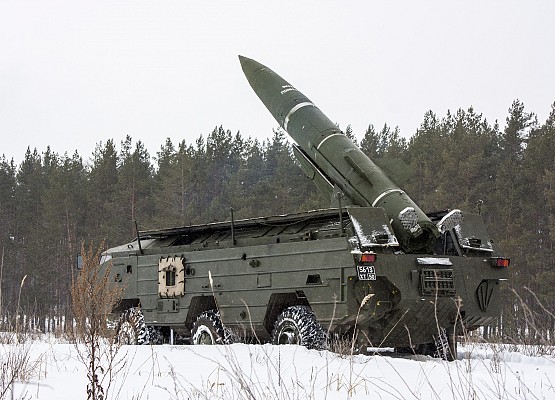
9K79-1 Tockha-U
Rear view of 9P129-1M launch vehicle of the 9K79-1 Tochka-U tactical missile system seen during an exercise in 2018.
Source: Ministry of Defence of the Russian Federation -
© CC BY 4.0
1989 for Tochka-U
1973 - 1974 (Soviet state trials)
1986 - 1988 (Tochka-U state trials)
Soviet Union - Barrikady (launch vehicle)
9K79 (GRAU index for system)
9M79 (GRAU index for missile)
9P129 (GRAU index for launch vehicle)
Tochka (nickname)
Russian for "point"
OTR-21 (INF treaty name)
Description
Introduction
The 9K79 Tochka is a late Cold War era tactical missile system of Soviet origin. It was developed in the early 1970's as a more capable alternative to the 9K52 Luna-M (NATO: FROG-7) large unguided artillery rocket. Tochka is also known under the name OTR-21, which stands for Operativno-Takticheskii Raketnyi kompleks, which translates to "tactical operational missile complex".
Design
The Tochka is a highly mobile system that launches short range ballistic missile that can be fitted with multiple types of warhead. The missiles use a solid propellant rocket motor, making them practically immediately ready to launch, unlike for instance the liquid fueled Elbrus (NATO: Scud) missile. Over time the rockets have been improved in range and accuracy. Inertial guidance is used. The 9P129 amphibious launch vehicle carries a single rocket within the vehicle. In the firing position the rocket is raised and launched from the vehicle.
Firepower
The Tochka carries a single short range ballistic missile with good range and accuracy. The maximum range is 70 km for the original model and 120 km for improved Tochka-U. The warhead may be conventional high explosive, fragmentation, 100 kt nuclear, chemical or . The CEP was 150 m for early models and improved to 95 m and 70 m subsequently.
Protection
The launch vehicle and transloader are based on a wheeled amphibious vehicle with limited degree of all around armor protection. This resists small arms fire and shell splinters. The missile is covered in transit, increasing protection from shrapnel. These vehicles are also optimized for the nuclear battlefield with the ability drive and launch the missiles from within under NBC protection. Reloading does seem to require some manual activities. The main protection for the Tochka is that its range allows it to operate from behind friendly frontline troops.
Mobility
Compared to the Luna-M that the Tochka replace the mobility is much improved. First and foremost it is based on a chassis that functions, unlike the complicated 8x8 chassis of the Luna-M. The lower center of gravity improves off road performance. A unique feature is that the Tochka has a substantial amphibious capability, being propelled in the water by water jet.
Users
The Tochka was used by the USSR in brigades of 18 vehicles. It was exported to several Warsaw Pact nations and ended up in service with various successor states of the Soviet Union. The number of users has reduced but the Tochka remains in service. It has been employed in the Chechen wars and in the 2008 South Ossetia war. In Russian service it was fully replaced by the more capable 9K720 Iskander (NATO: SS-26 Stone). However, during the 2022 Ukraine war Russia re-introduced the Tochka from storage. Both Ukraine and Russia have actively used the Tochka in combat, sometimes with devastating effect.
System composition
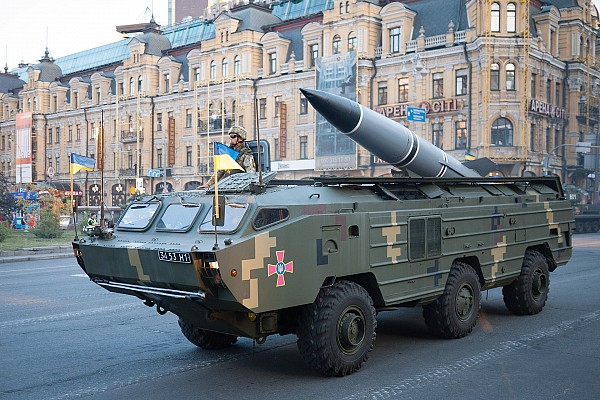
9P129 launch vehicle
Six wheel launch vehicle based on the BAZ-5921 amphibious chassis. The launch vehicle has a single 9M79 missile ready to launch in a raiseable cradle. When on the move the missile compartment is covered by to two large cover plates.
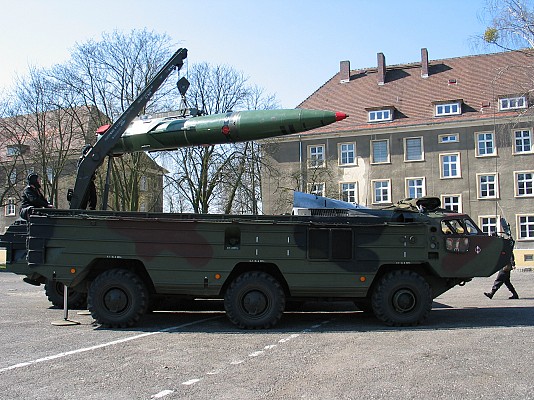
9T218 transloader
Six wheel transloader based on the BAZ-5922 amphibious chassis. Two 9M79 missiles can be stored under cover. The SB-75 hydraulic crane is fitted to transfer a missile to the 9P129 launch vehicle. This reportedly takes about 19 minutes.
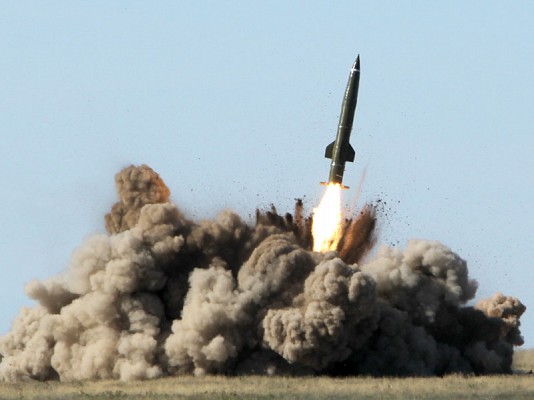
9M79 missile
Tactical ballistic missile produced in three major variants and comes with several warhead options. Described in further detail in separate table.
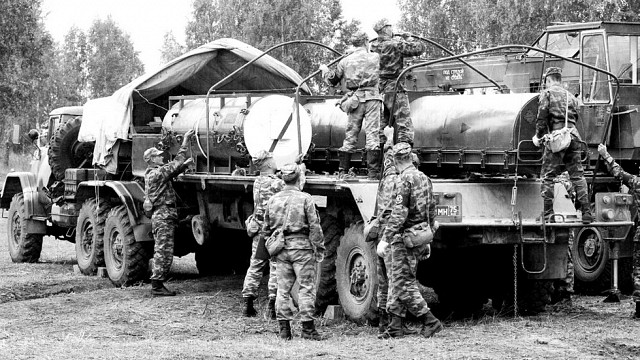
9T222 and 9T238 trailers
Specialized trailers for transportation of 9M79 missiles and warheads in the rear area. These twin axle trailers are used in conjunction with a ZiL-131V tractor truck.
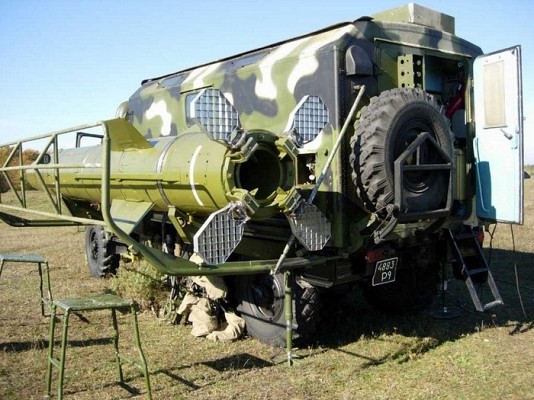
9V819 and 9V844 support vehicles
Support equipment consists of several vehicles. The main types are the 9V819 (and 9V819-1) automated control and testing vehicle and the 9V844 (and 9V844M) maintenance vehicle. The 9V819 services the 9M79 missiles and warhead and the 9V844 supports the vehicles and various types of equipment. Both vehicle types are based on the ZiL-131 truck chassis with a K-131 box body, with the 9V844 also towing a generator trailer.
Vehicle details
Missile types
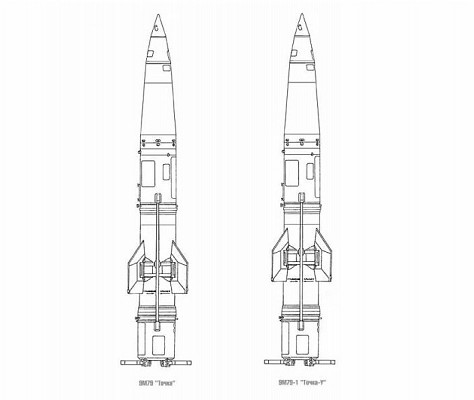
9M79 and 9M79-1 missiles
Line diagram of 9M79 (left) and 9M79-1 (right) short range ballistic missiles side by side.
Source: military.tomsk.ru -
© Copyright lies with original owner
List of Tochka missile variants
Missile details
Warhead options
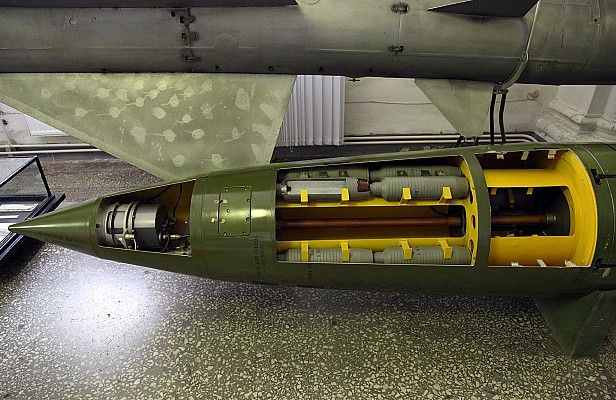
9N123K warhead section
Cut away instructional model of a 9N123K cluster warhead section displayed in a museum. This contains 50 9N24 high explosive fragmentation submunitions.
Source: Vitaly V. Kuzmin -
© CC BY-SA 4.0
List of warhead types
Media
Related articles
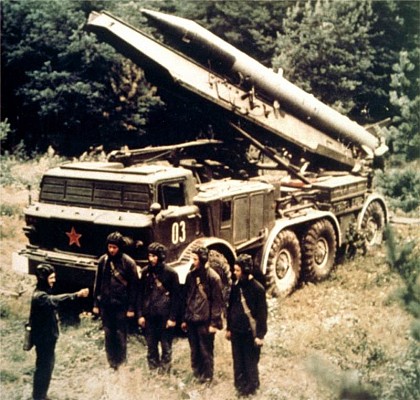
9K52 Luna-M
The Tochka was a replacement for the Luna-M large artillery rocket. Tochka was a quantum leap improvement in range and accuracy. As such it is more effective in deep strike interdiction.
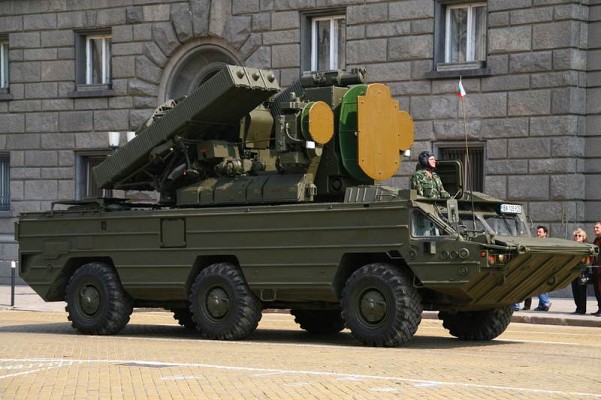
9K33 Osa
The 9K33 Osa (NATO: SA-8 Gecko) short range air defense system is based on the same BAZ 6x6 amphibious chassis.
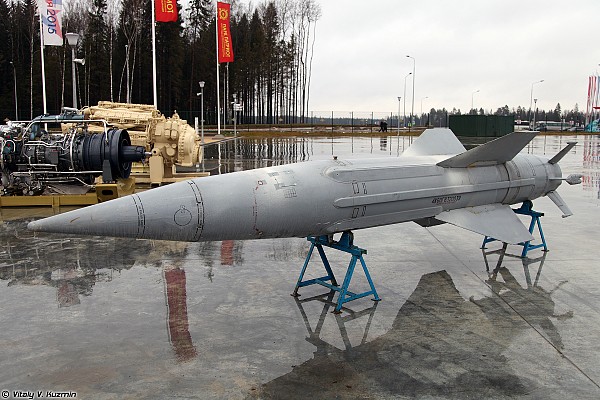
V-611
The design of the Tochka missile was patterned after the V-611 surface to air missile. This has a similar length, diameter and main wing set up. Over time various changes were made, such as introducing the lattice tail control fins.
